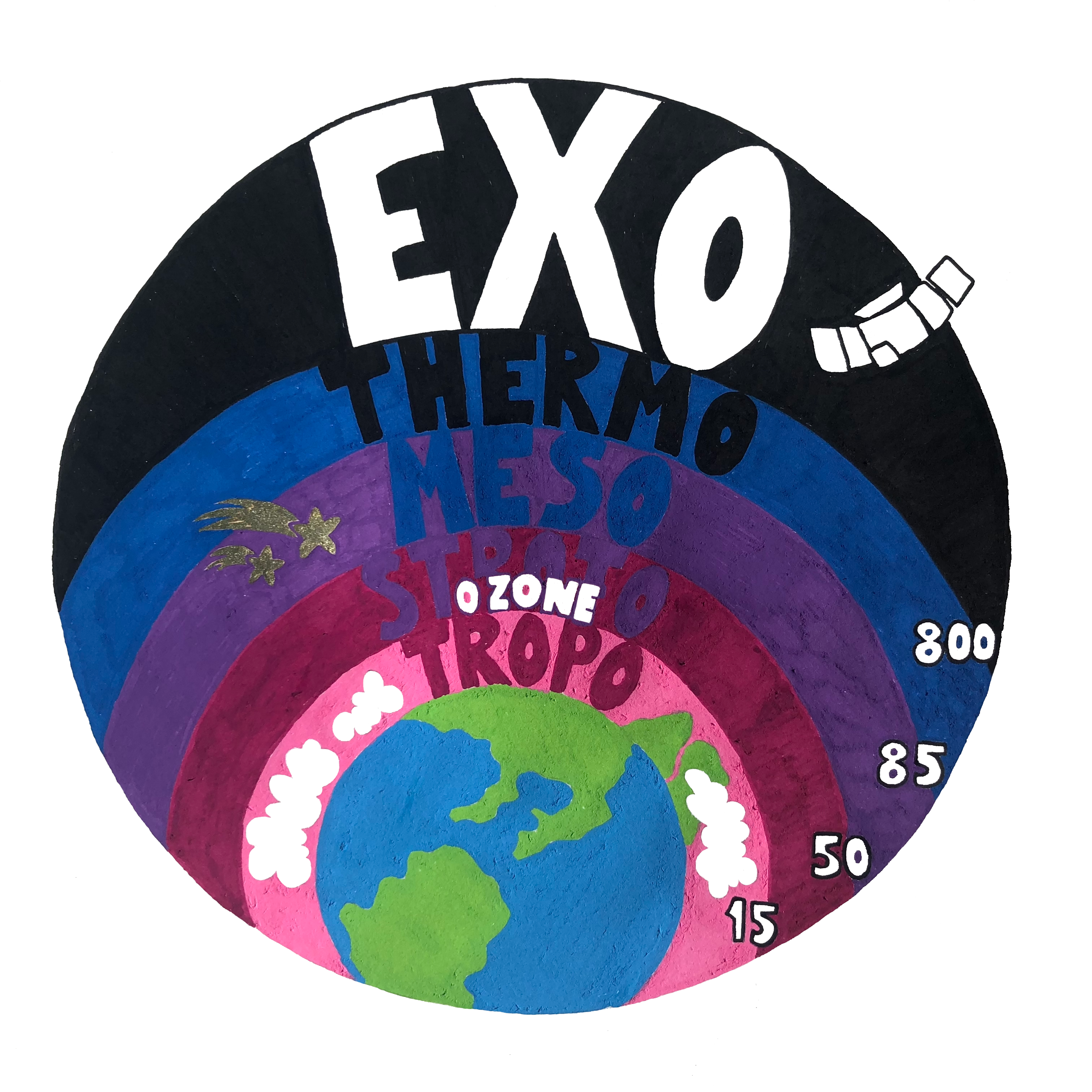Posts from January 2021
What is important when you make a computer model of a planetary atmosphere?
Leiden, Nederland
One model for each layer in the atmosphere
In my previous blog, I shared a bit of background information about a project I
am working on: creating a computer model of our Earth. I am investigating how light
from the Sun is reflected on the Earth's surface and sent back into space. By 'measuring'
this reflected sunlight, I can simulate taking a special photograph from outer space.
For example from the point of view of a satellite.
The amount of light reflected from the surface of the Earth depends on several factors:
- surface albedo. This indicates the 'whiteness' of the surface. White surfaces such as ice, snow and salt plains bounce off much more light than dark surfaces do. Black is the darkest colour and reflects no light at all. Examples of black surfaces are asphalt and lava rock. Not only black but also other colours like green (forests and grass) and dark blue (oceans) do not reflect all the sunlight.
- clouds. In the Netherlands we know very well that there can be plenty of clouds in the sky and that they block the light coming from the Sun. The KNMI provides a very nice description of many different types of clouds at their website. We describe the amount of light that can still shine through a cloud by a number that we refer to as the optical thickness. This depends on the type of cloud particles (mini water droplets or ice crystals) and the depth of the cloud. A cloud can both absorb and reflect light.
- air molecules. The air we inhale every day is made up of very small particles, called molecules. These molecules can also block parts of the sun's rays. As in the case of clouds, we can calculate for these molecules how much light will be absorbed or reflected.
Because I am working on a model of the entire atmosphere, I need to understand the different layers of the atmosphere. In this way, I can compute how a ray of sunlight behaves when it travels through the atmosphere and how much Sunlight is being reflected.
January 23, 2021

